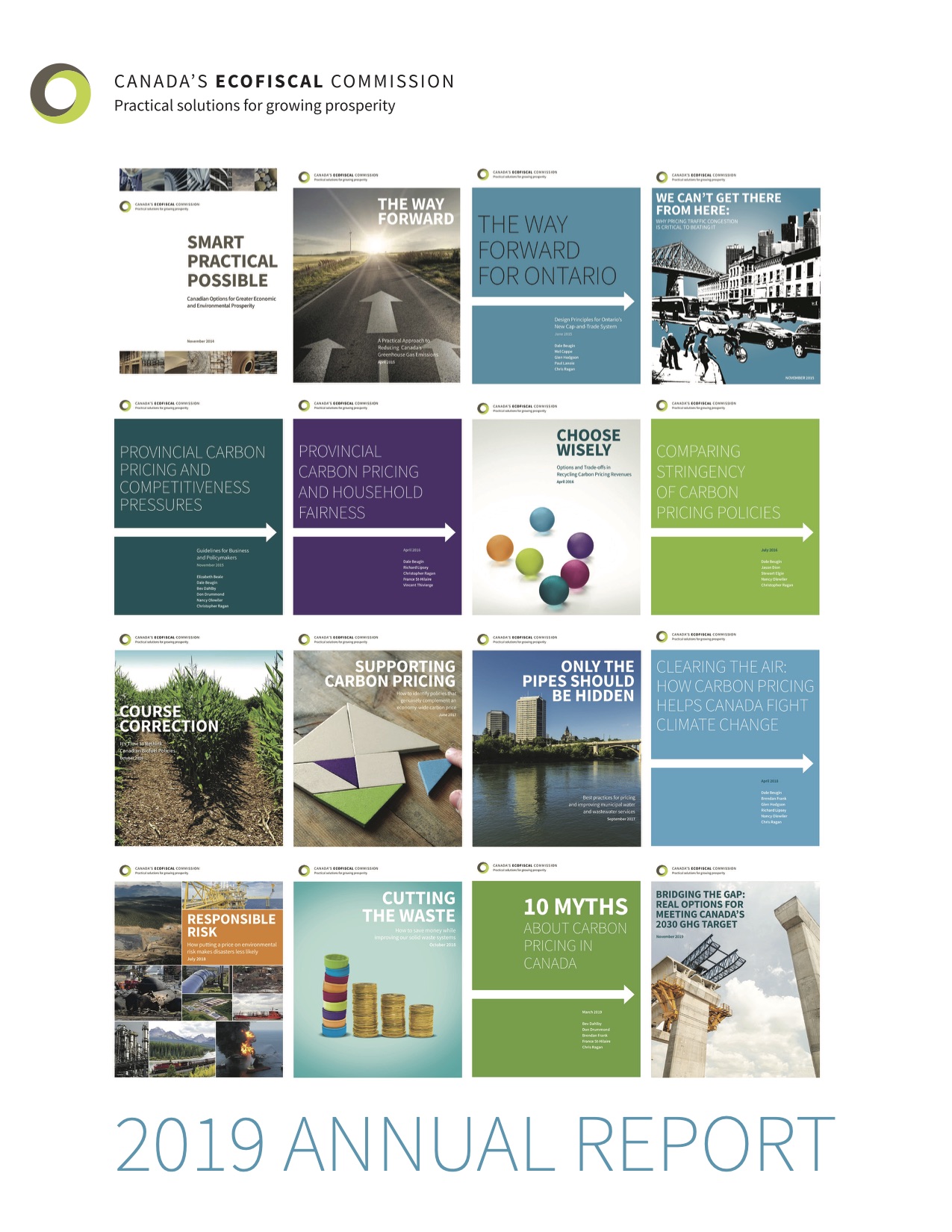
Annual Report 2019: Letter from the Chair

This marks our final annual report, as the Commission comes to the end of our five-year mandate. In 2019, our work focussed once again on carbon pricing — a topic we first addressed in 2014 and have returned to regularly.
Since our launch, the political landscape around carbon has changed significantly — and so has our communications strategy. Phase one saw us building the case that good environmental policy makes economic sense, creating space for policy-makers to bring ecofiscal ideas to the table. In 2018 we moved into phase two, focusing more on public education as the debate about carbon pricing heated up. That continued in 2019.
In March, with the federal backstop about to launch and discussions about carbon pricing becoming increasingly polarized, we launched 10 Carbon Myths. Our easy-to-understand infographics helped set the record straight about pricing pollution. Meanwhile videos, blogs and an extensive social media campaign ensured we reached as many Canadians as possible. In August, we followed that up with Six Places Where Carbon Pricing is Working — an essay highlighting successful examples of carbon pricing around the world.
 We also took a strategic departure from our core mandate in 2019. After careful consideration, the Commission agreed to intervene as a “friend of the court” in the two provincial challenges to federal carbon pricing. In both cases, the court concluded that the pricing framework was legal.
We also took a strategic departure from our core mandate in 2019. After careful consideration, the Commission agreed to intervene as a “friend of the court” in the two provincial challenges to federal carbon pricing. In both cases, the court concluded that the pricing framework was legal.
With the publication of Bridging the Gap in November 2019, we shifted to phase three, putting our attention back on policy-makers. In this final Ecofiscal report, we compared the cost-effectiveness of carbon pricing with other policy tools to drive reductions in greenhouse gas emissions.
Of course, carbon wasn’t the only issue we tackled over the past five years. Our report on traffic congestion generated significant media attention, and our report on municipal waste informed the City of Calgary’s new pay-as-you-throw program. Meanwhile, our research into pricing environmental risk has been widely cited by First Nations groups.
At this point, it’s too soon to say what the Commission’s legacy will be. In the short term, we’ve succeeded in catalyzing discussion, building a body of evidence and showing that good ecofiscal policies can be smart, practical and possible. More broadly speaking, we’ve made the premise of pollution pricing a publicly recognized concept.
But our impact doesn’t end there. As the Commission wraps up its mandate, we’re confident our reports and blogs will continue to be useful, informing policy decisions long after we’ve pulled down the blinds and locked the door.
As we acknowledge in more detail in the final section of this report, this was a team effort. Here, I will simply say thank you to the many dedicated and talented people who made these successes possible.
Read the Annual Report




Comments are closed.